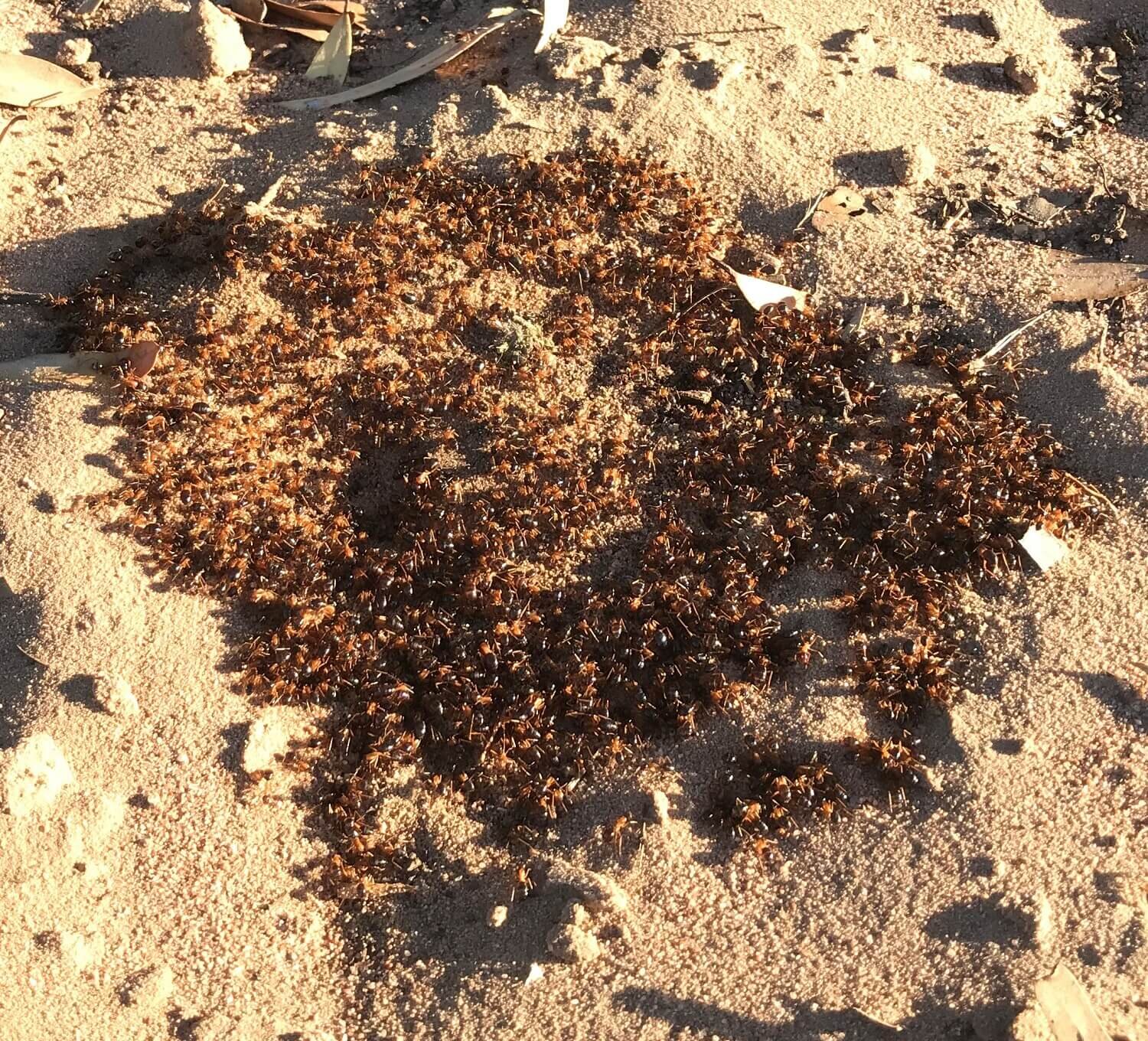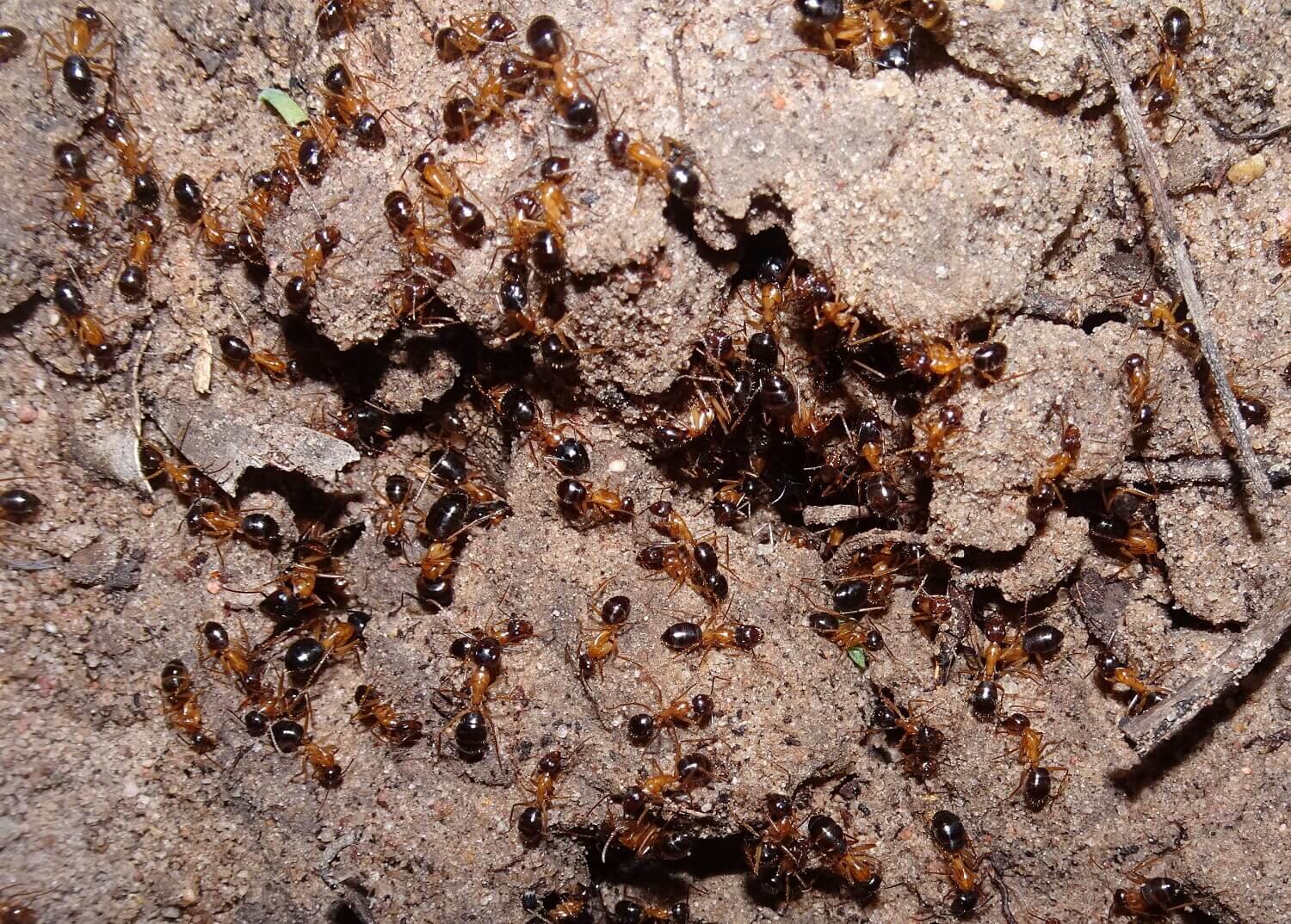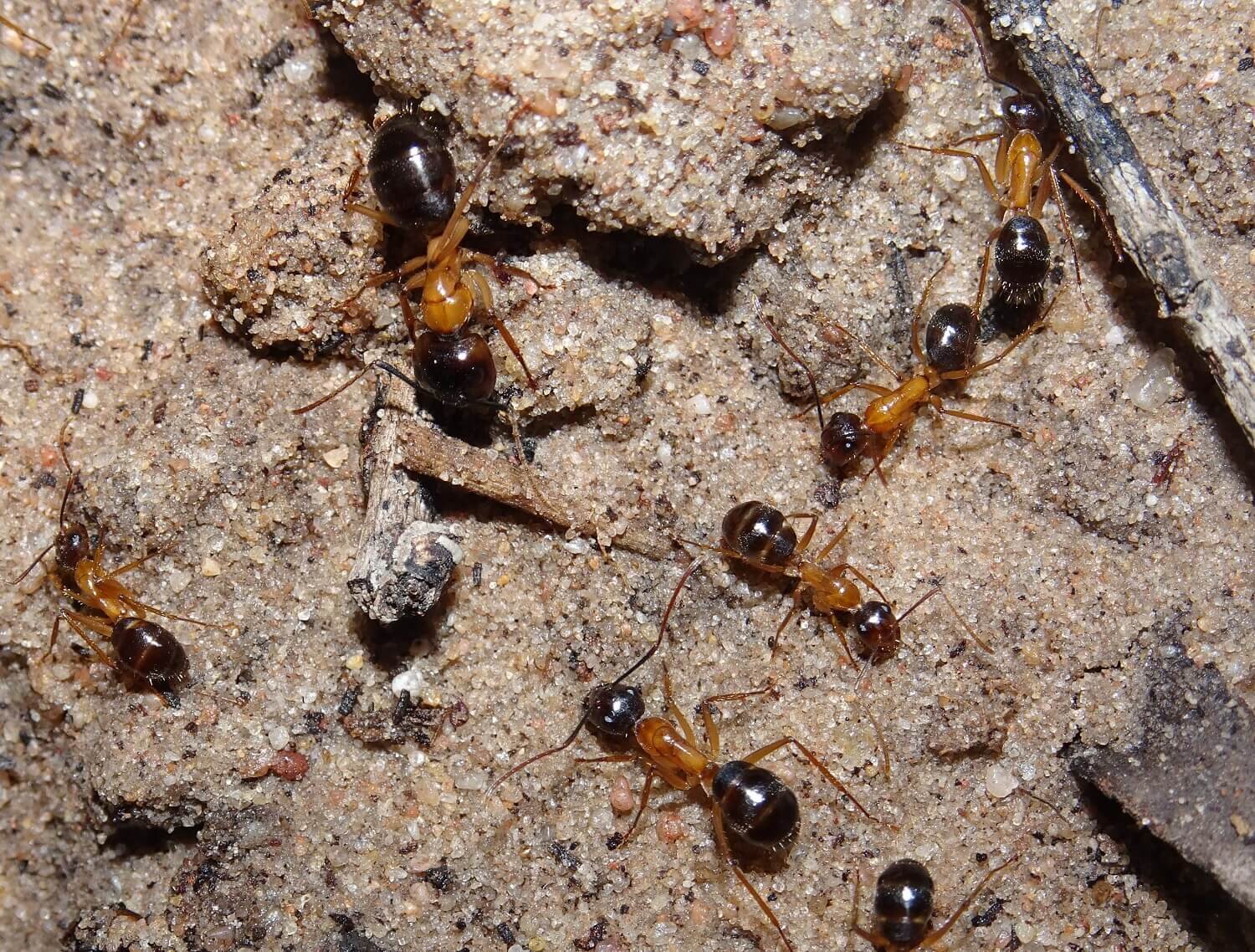The Sugar Ant is a hero
My 2021 entry for the threatened species bake-off, theme “ecosystem engineers” #TSbakeoff. The annual baking competition is held just prior to Threatened Species Day on September 7th.
The Sugar Ant that looks after a butterfly
This is the Sugar Ant (Camponotus terebrans) emerging from its sandy nest at the base of a tree. On the tree, also at the entrance to the nest, are the eggs of the Mallee Bronze Azure butterfly (Ogyris subterrestris). The older, hatched eggs are pale in color, whilst the new eggs are much darker. This butterfly is endangered and is totally reliant on the Sugar Ant to rear the caterpillars. Once the eggs hatch, the ants carry the larvae deep into the nest. We’re not completely sure what happens next, but it is possibly something like this:
Butterfly larva produces amazing-smelling pheromone which convinces the ant to look after it like a queen. But butterfly larva is secretly eating the ant babies so it can grow big and strong. Ants are completely fooled by the sweet-smelling, but diabolical caterpillar and look after it until it emerges from the ant nest as a beautiful butterfly. (1)
Inspiration for this cake came from this photograph of our Sugar Ants with the eggs of the Mallee Bronze Azure butterfly.
In 2021, I was horrified to discover that “our” butterfly was 7th on a list of 26 Australian butterflies most likely to go extinct in the next 20 years (2). I put out a call for any scientists willing to share their knowledge to help us better protect our significant butterfly population.
One of those to respond was Prof. Alan Anderson. Yep, the ant-man and Fellow of the Australian Academy of Science; so much excited squealing when I received that email.
Unravelling the identity of this special ant
I was wondering whether the attendant Sugar Ant for our butterfly could be a rarer ant from the Camponotus terebrans species complex. In August 2022 I collected some ants from a nest at the base of a tree where there were also many butterfly eggs (It was a Blackbox Eucalyptus largiflorens for those who like the details). I sent the ants to Prof. Anderson and the response came: “The ant species is indeed a member of the C. terebrans complex, but not the large-eyed species. There are many species in the complex, all going under ‘’terebrans’’. I have a dozen or so sorted, and have genetic data on six of them. Your species doesn’t match anything I have.”
I was amazed. How can we know so little about such a common ant? So, in 2024 we collected fifty ant samples for CO1 barcoding (again, thanks to Prof Anderson). These were mostly collected from Hattah Kulkyne National Park, but also included samples from across the known range of the butterfly in Victoria and South Australia. These ants came from colonies known to host butterflies, and colonies where butterflies were not present.
The genetics showed that all ant specimens collected from the Mallee of Victoria and South Australia were genetically similar (comprise a single species). And there were no genetic differences between hosting and non-hosting ant colonies. So, although the Camponotus terebrans species complex includes lots of different genetic forms across Australia, the form found in the Mallee is common and widespread. It is not rarity of the host ant that leads to rarity of the butterfly (3).
Piss ants love urine
And one last cool thing about the Sugar Ant. We call them Piss Ants because it is not uncommon to see them clustering together to feed where a kangaroo has urinated. Turns out that Piss Ant is the correct name.
Scientists on Kangaroo Island proved that Camponotus terebrans prefer urine over sugar water. They return to forage on dried urine patches for weeks, mining the urea. Australian soils are typically nutrient-poor, so urine is one way for the ants to get their vitamins and minerals, especially nitrogen for protein (4).
More information:
You can see all the threatened species bake-off entries here https://www.facebook.com/TSCommissioner
A flashback to last year: I made a butterfly cake https://www.malleeconservation.com.au/blog/ogyris-bakeoff
A more scientific and detailed exploration of the ant-butterfly relationship for Ogyris subterrestris subterrestris can be found here https://sabutterflies.org.au/lyca/subterrestris.html
More on the list of threatened butterflies here https://www.malleeconservation.com.au/blog/ogyris
Murdoch (2024) Impacts of flooding on the Mallee Bronze Azure butterfly Ogyris subterrestris. Report prepared for DEECA and jointly funded by the Australian and Victorian governments under Disaster Recovery Funding arrangements.
Petit et al. (2019) Camponotus ants mine sand for vertebrate urine to extract nitrogen. https://onlinelibrary.wiley.com/doi/full/10.1111/aec.12840
Written in 2021, updated in October 2025. This little Covid-flashback was included in the original post:
And if you’re wondering how the cake was made: it’s just a basic butter cake with butter frosting for the tree, and raw sugar for the sand. The ant and eggs are made from fondant, with the legs and antennae crafted from copper wire. I painted the fondant with food dye. I’ve called it “lockdown fondant”. I had to do some substitutions because shopping for fondant ingredients is not one of the five reasons I can leave home at the moment (Covid lockdown #7 for us). I used this Thermomix fondant recipe but used brown rice syrup instead of liquid glucose and light olive oil instead of glycerine.







